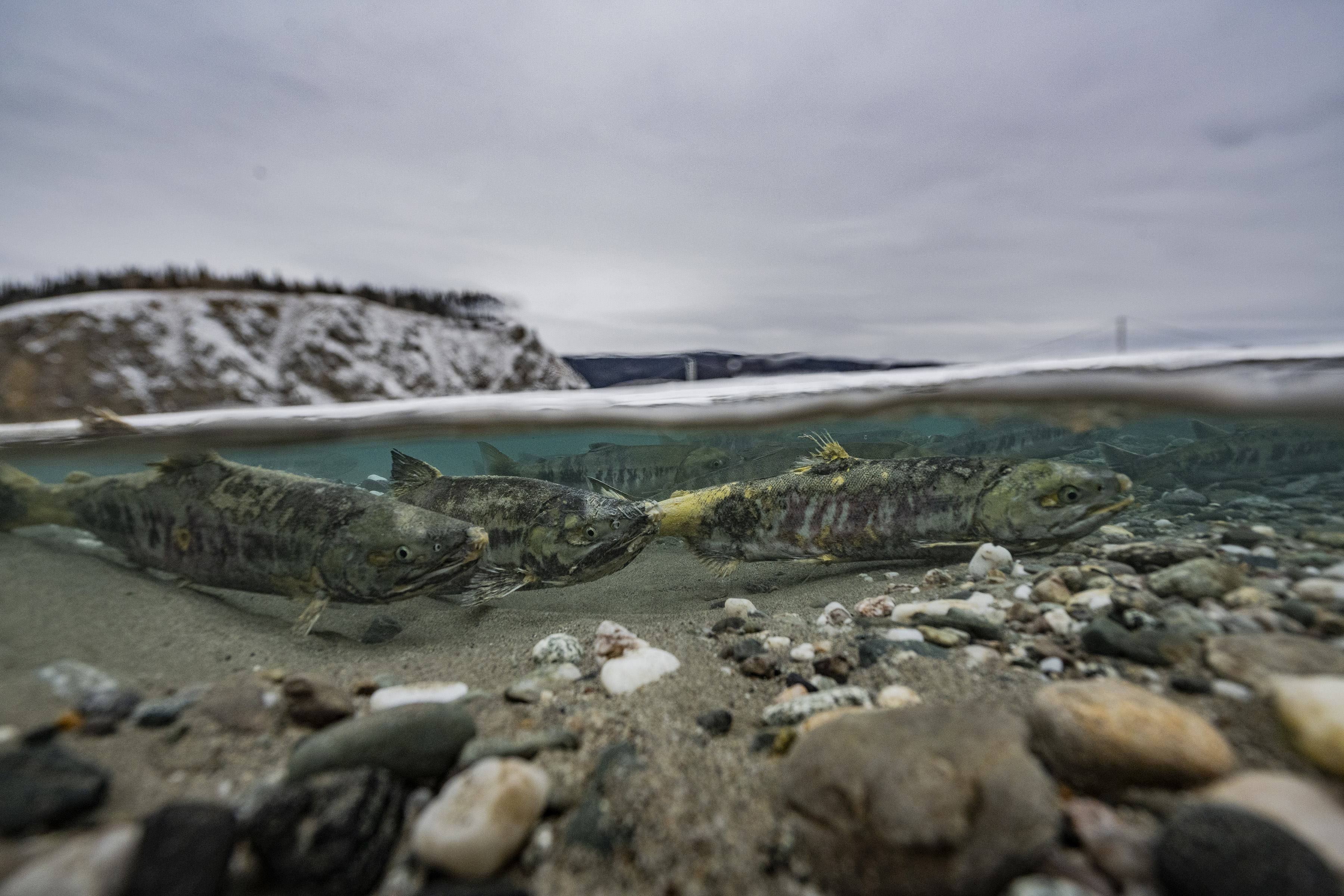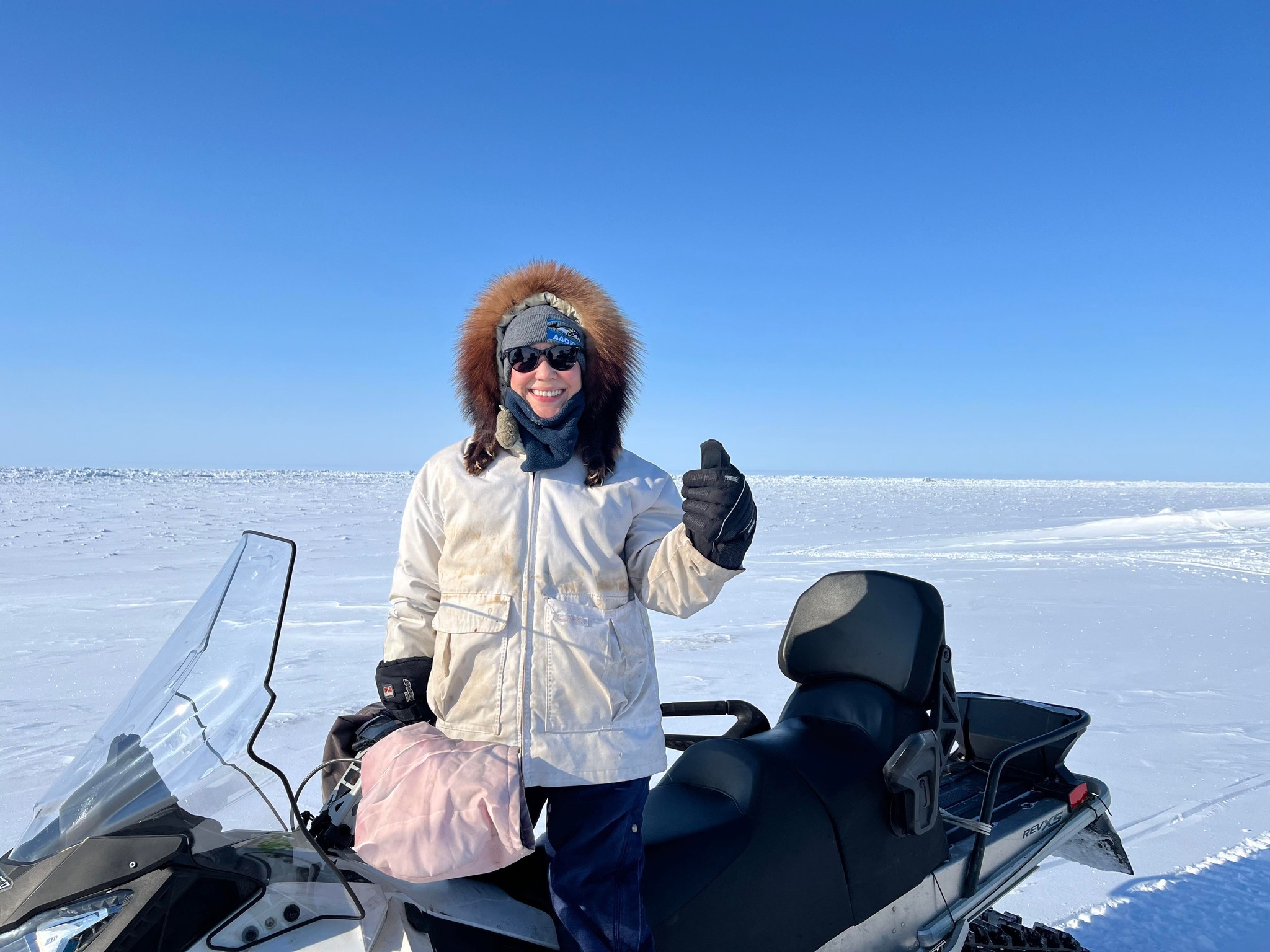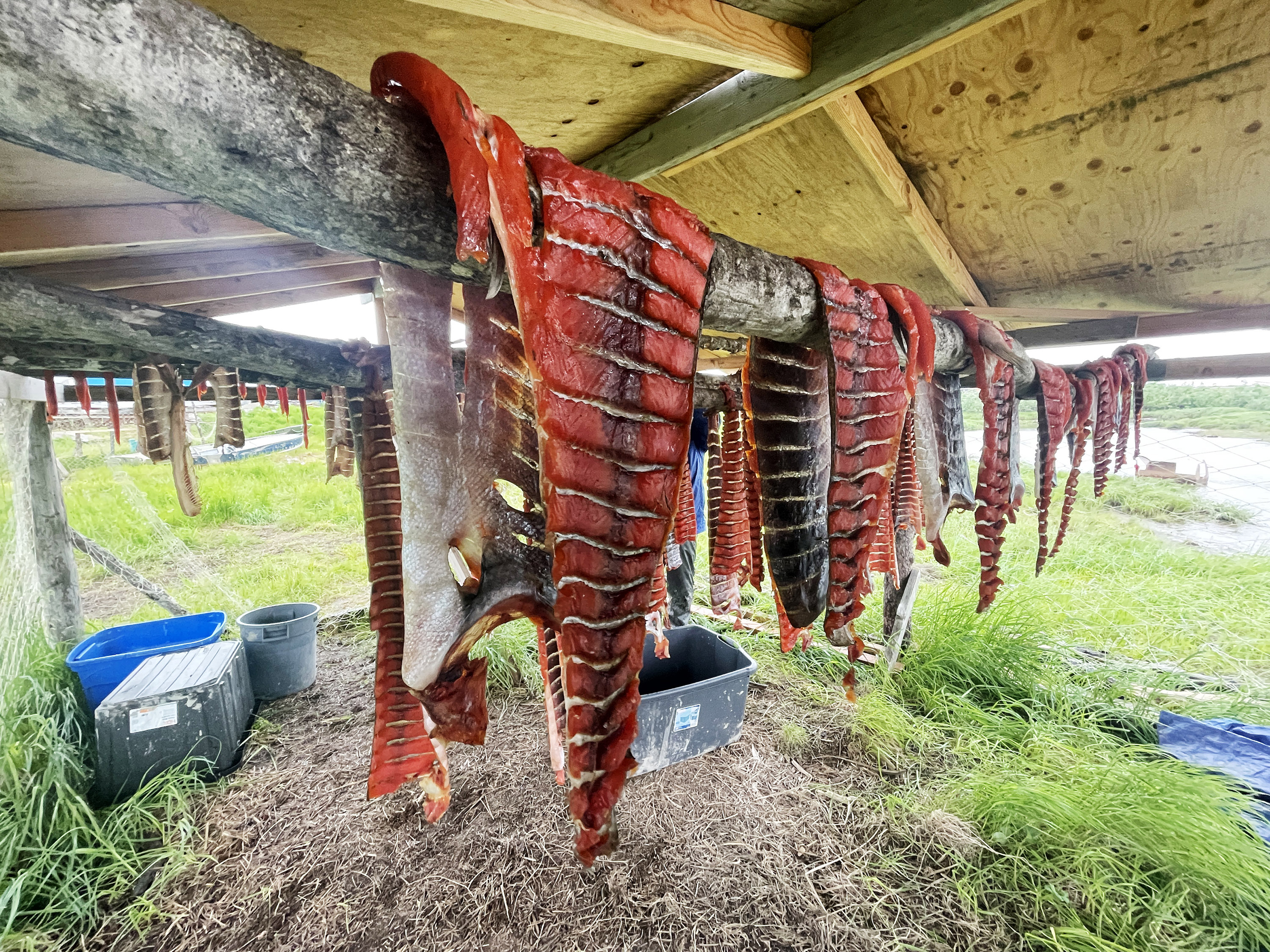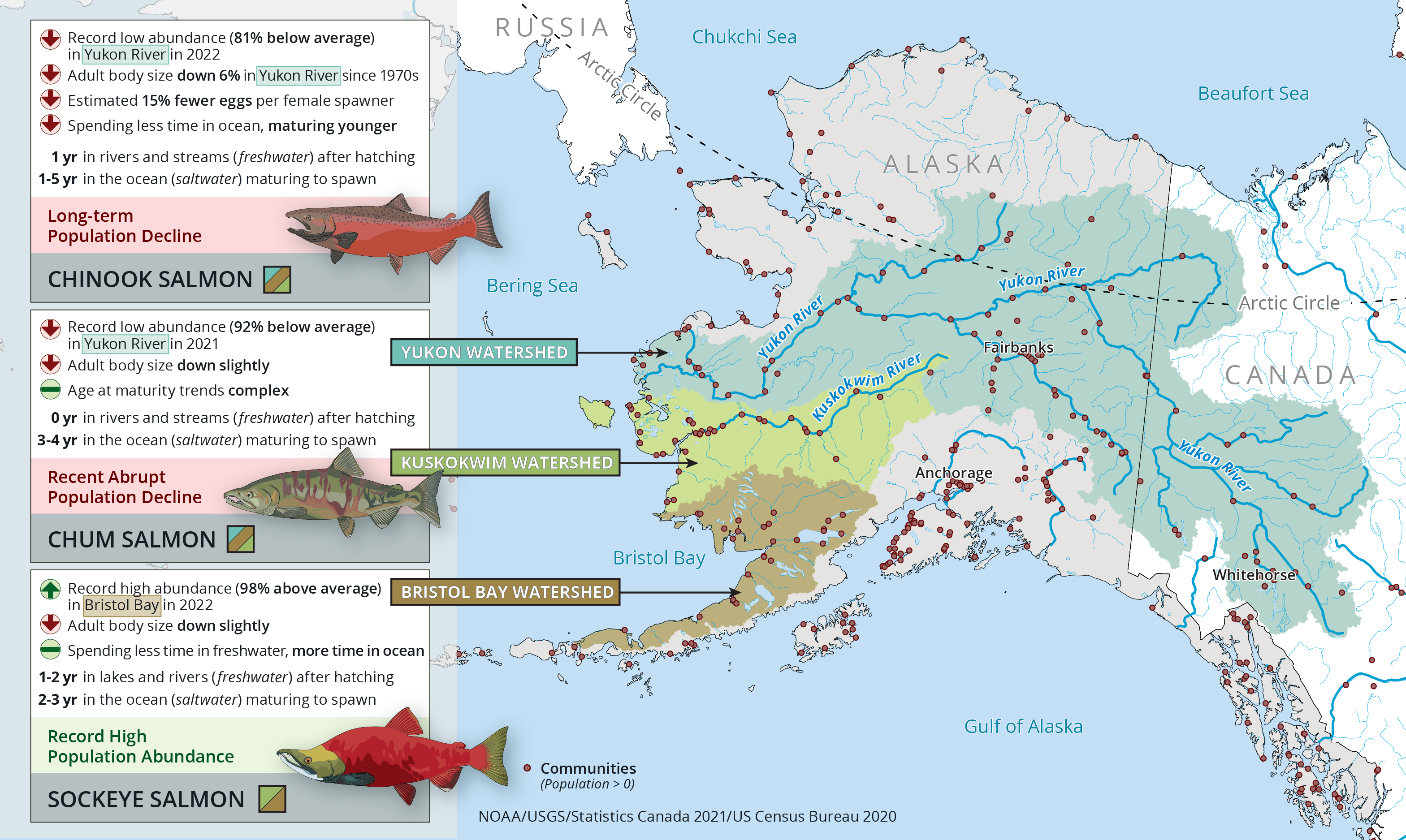Arctic Report Card highlights salmon extremes, local observers
Heather McFarland
907-474-6286
Dec. 12, 2023
Eleven University of Alaska Fairbanks scientists contributed as authors to the 18th Arctic Report Card released Dec. 12, 2023. The report card, produced by the National Oceanic and Atmospheric Administration, documents how warming air, ocean and land affect people and ecosystems.

Spawning chum salmon swim in a spring feeding the Tanana River, a tributary of the Yukon River.
According to Rick Thoman, the lead editor and a climate specialist at the UAF Alaska Center for Climate Assessment and Policy, the sections on salmon and working with local communities may be of particular interest to Alaskans.
The report card models a crucial shift toward centering local Indigenous knowledge in Arctic research and decision making. UAF’s Alaska Arctic Observatory and Knowledge Hub was highlighted for its long-term work documenting environmental changes and impacts in northern Alaska using a coordinated network of coastal Indigenous observers.
“When you have local observations side-by-side with scientific data, it tells a more complete story of not just what's happening but how those changes are being perceived and their impact in terms of activities or travel,” said Roberta Glenn, lead author of the chapter called “Nunaaqqit Savaqatigivlugich” — Iñupiat for “working with communities” — and AAOKH’s project coordinator and community liaison.
In 2022, observers in the network noted more frequent and intense coastal storms that contributed to flooding in communities and erosion along coastlines. They also shared how shifting wind patterns altered the sea ice, improving access to marine mammal hunting areas.
In their chapter, AAOKH began each paragraph with quotes from the observers.
“That was intentional. We really make an effort to center the voices and the observations of the people we work with,” explained Glenn, who recently completed her master’s degree at UAF under report card co-author Donna Hauser.
“It's been a cool experience as an Iñuit woman to be included as a contributing author in something like this,” said Glenn. “I feel proud to be able to share what I've learned through working with Indigenous people to a broader stage.”
The Arctic Report Card also included the latest data and research surrounding the record high and low salmon numbers in western Alaska.
“We’ve seen heat waves in the ocean and heat waves on land, and salmon populations have been responding with extreme ups and downs,” said Erik Schoen, lead author of the salmon chapter and a fisheries scientist at the UAF International Arctic Research Center. Peter Westley, a scientist at the UAF College of Fisheries and Ocean Sciences, was also among the salmon chapter co-authors.
In 2022, 81% fewer king salmon returned than average to the Yukon River, a new record low and part of a long-term decline seen across the state. The cause of the decline is complex, and scientists have found possible links to water temperature, disease and declining body size.
“We know that king populations on the Yukon do worse when the adult salmon swimming upriver to spawn experience high river temperatures and low flow, which tend to be correlated with hot, dry years,” explained Schoen. “There's also a disease called Ichthyophonus that can interfere with a salmon’s ability to swim.”

Roberta Glenn pauses while riding a snowmachine near Utqiaġvik during work mapping sea ice with Alaska Arctic Observatory and Knowledge Hub observers.
Chum salmon also recently collapsed. In 2021, 92% fewer adults returned to the Yukon than average. Unlike kings, chum populations had been stable.
“It came out of nowhere,” said Schoen.
The decline has been linked to unprecedented heat waves and loss of sea ice in the Bering Sea. Juvenile chum salmon ate lower quality food and put on less fat under those conditions, potentially reducing their survival rates.
The recent king and chum declines led to fishery closures, user conflicts and profound cultural and food security concerns for Indigenous communities.
In contrast to chum and kings, sockeye salmon in Bristol Bay and the Kuskokwim River did extremely well in recent years. Last year, the commercial fishery caught almost double the 30-year average, more fish than any year since the commercial harvest record began in the 1880s.
The increase may be linked to warmer lakes that allow young sockeye to grow faster. In the past, many sockeye spent two years in lakes before migrating to the ocean; now they mostly spend only one.

Salmon drying in Quinhagak, Alaska, in July 2023.
“These changes in salmon abundance are not just numbers in a spreadsheet. The ups and downs really affect people. Countless communities in Alaska are tied to rivers, and salmon are such an incredibly important resource,” Schoen said.
UAF’s John Walsh, Rick Thoman, Tom Ballinger, Rick Lader, Uma Bhatt, Chris Waigl and Skip Walker also co-authored chapters on the 2022/23 Arctic air temperature, precipitation and tundra greenness.
Alaska-specific highlights from these chapters include:
- Spring 2023 was cooler than normal across most of Alaska, while the rest of the year was warmer than normal in northern Alaska.
- The high temperatures on the North Slope improved plant growth, so the tundra appeared more green in satellite imagery.
- Most of Alaska was wetter than normal, continuing a long-term trend. The North Slope had the fourth wettest autumn in 98 years, and Alaska’s west coast had its second wettest winter in 99 years. Anchorage set a new monthly record for precipitation in December 2022.
Learn more about the Arctic Report Card during an ACCAP webinar on Jan. 17.
ADDITIONAL CONTACTS: Rick Thoman, rthoman@alaska.edu; Roberta Glenn, rjglenn@alaska.edu; Erik Schoen, eschoen@alaska.edu
ADDITIONAL MEDIA CONTACTS: Monica Allen, monica.allen@noaa.gov, 202-379-6693; Theo Stein, theo.stein@noaa.gov, 303-819-7409
104-24

The map illustrates contrasting trends in abundance and demographics of key salmon stocks in western Alaska. Dots represent communities in the U.S. and Canada.


